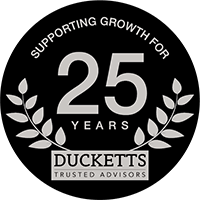In any given industry, some companies consistently out perform the pack by an order of magnitude. These are the Pacesetters - usually performing well despite the prevailing conditions.
What do these businesses look like?
Pacesetter businesses have the following characteristics:
- A clear and consistent focus on what needs to be done to build value (quantity and quality of earnings)
- A sensitive and responsive approach to customer wants and needs
- Appropriate management and leadership (i.e. culture)
- Efficient operating procedures
- A systematic mechanism for controlling operations
- A robust financial reporting system
- A clear succession plan and exit strategy for the owners
Our experience of successful owners is that they invariably know or do the following:
- What their most profitable products are
- What their most profitable customers are
- What activities cost How to control their cashflow
- What are the key actions that produce a result
- They have the means to identify, monitor and manage the key actions
- They manage their operations to produce the desired result
None of these things is particularly difficult to achieve in isolation. To get them all to come together takes discipline and a systematic approach.
So, How do you get to be a pacesetter?
You need to know what’s happening at the moment. This calls for an impartial view of the business which includes a look at your internal workings and also the environment in which you trade.
Then you need to decide what your business could look like – your vision. How you want your business to be seen by others. It is no good being the same as all your competitors, and being excellent at service is not enough either. You have to be different in a way that is important to your customers and which keeps then loyal to you. There is no substitute for talking to customers and team members on this point.
You then need to develop a strategy that is both practical and deliverable. The strategy sets the overall direction of the business. The real work is in determining the individual tactics you will employ to get there and the changes that need to be made
Then you need to document how these processes will operate once you have found out the most successful way of doing things. Don’t expect the changes to work first time, and don’t give up!. It is often on the 3rd or 4th attempt that you really get it right. Most average businesses give up after one attempt at making a change as it is just too difficult. Documenting systems is not exciting, but is worth the effort. The point, is that a potential buyer of your business wants to purchase a future guaranteed income stream. If your business operations are documented, then the buyer will be more certain that they can produce the same results as you. A business that is wholly reliant upon its owner for success, is not an attractive purchase.
Finally, to ensure the business is operating the way you want, you need to identify the key things to monitor. It is very unlikely that this will just be you monthly profit and loss account or bank balance! You need to measure and manage the key actions that bring the results. So for example, in a retail business it is not enough to measure the weekly/daily takings as this does not give you enough practical information on which to operate (comparing them to last year is even worse).
A better approach could be to monitor:
- Number of daily transactions
- Average value of these transactions
- Number of live customers
- Customer satisfaction
- Team satisfaction (they are the ones who speak to you customers most)
- Measures of production efficiency ……all in relation to the financial plan for the business.
The important point is that it allows you to manage actions. Sales/profit/cash are just the result of the interaction by you and your team with customers. You cannot manage a result, a residual figure, just the actions that lead to a result. It is far more productive for example, to look at ways of increasing the amount spent each time a customer visits rather than thinking “how can I increase sales” or “we’ve had a bad month”
So much for the theory. Why not talk to us about the reality?
Contact Mark Vickress: mark@duckettsgrowth.co.uk
you need to identify the key things to monitor
Find out More

